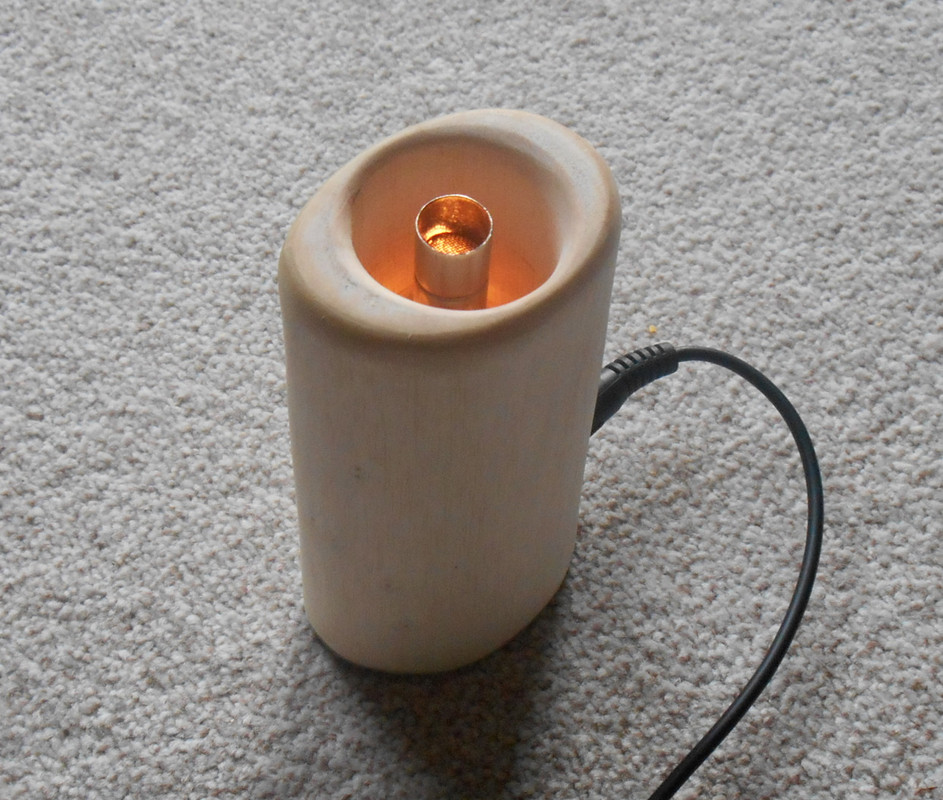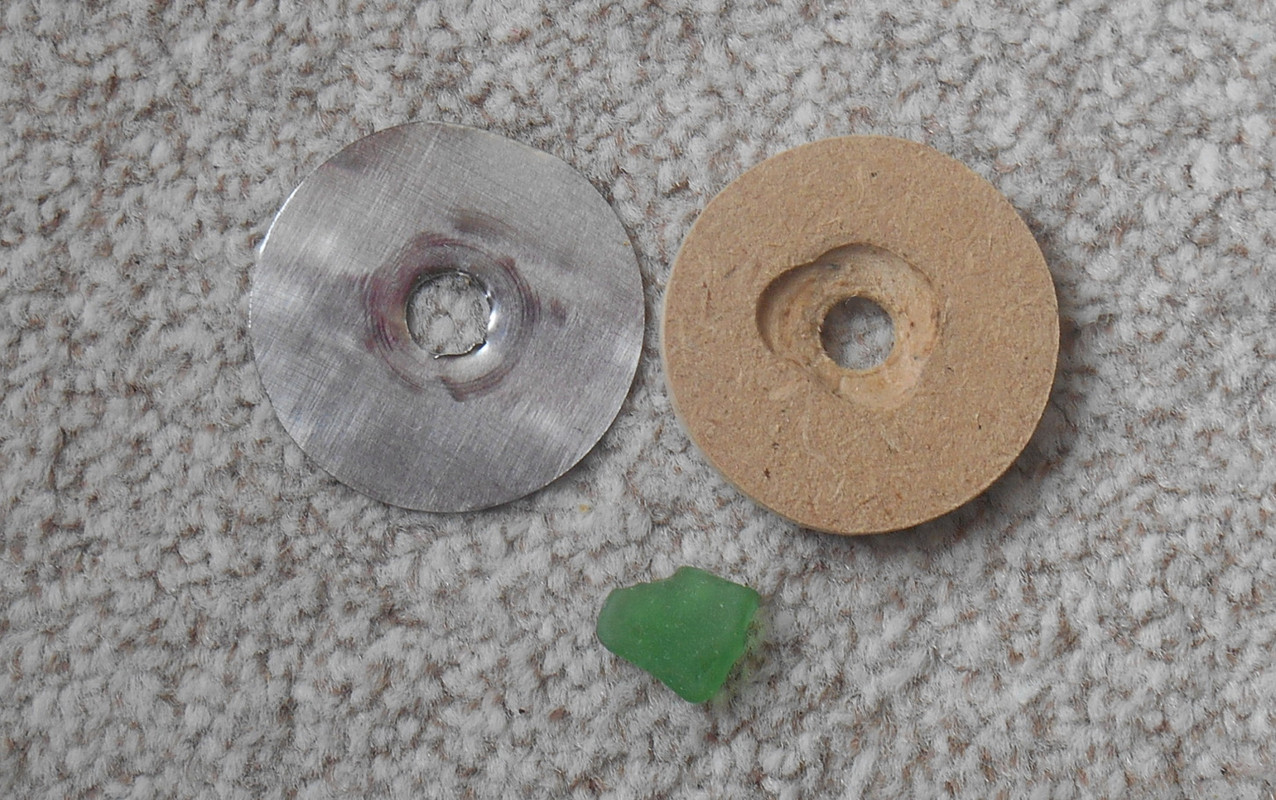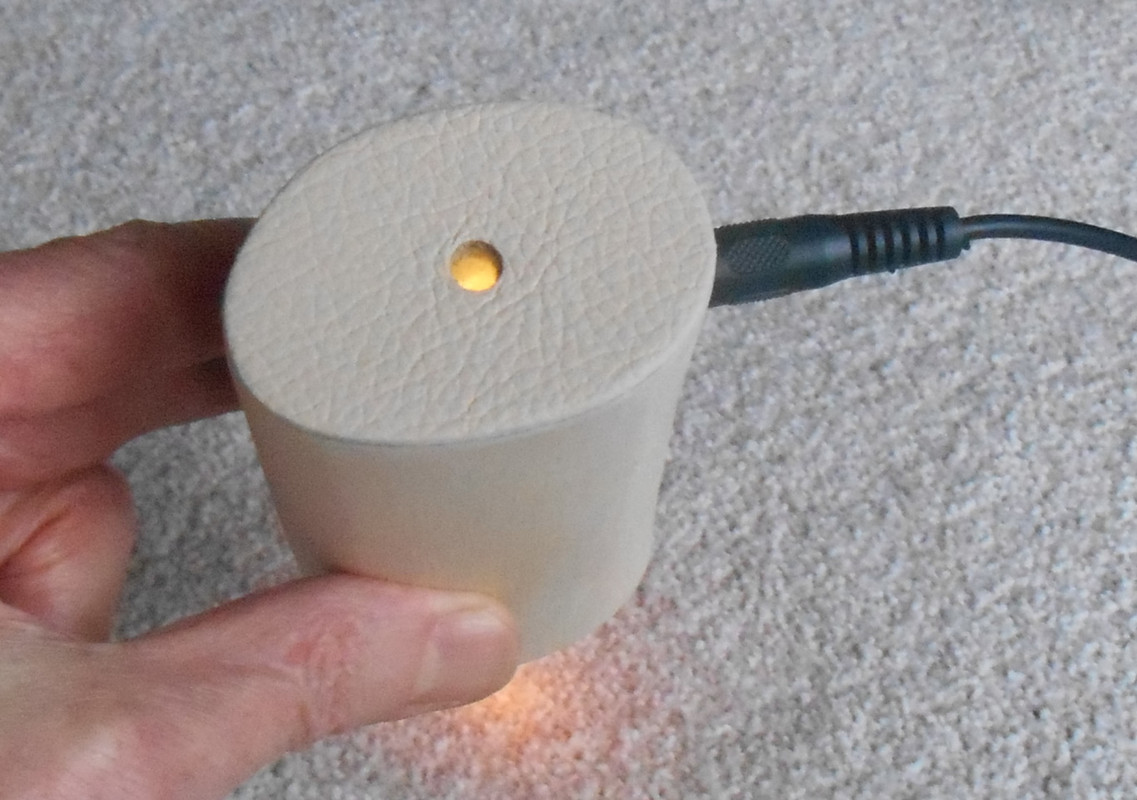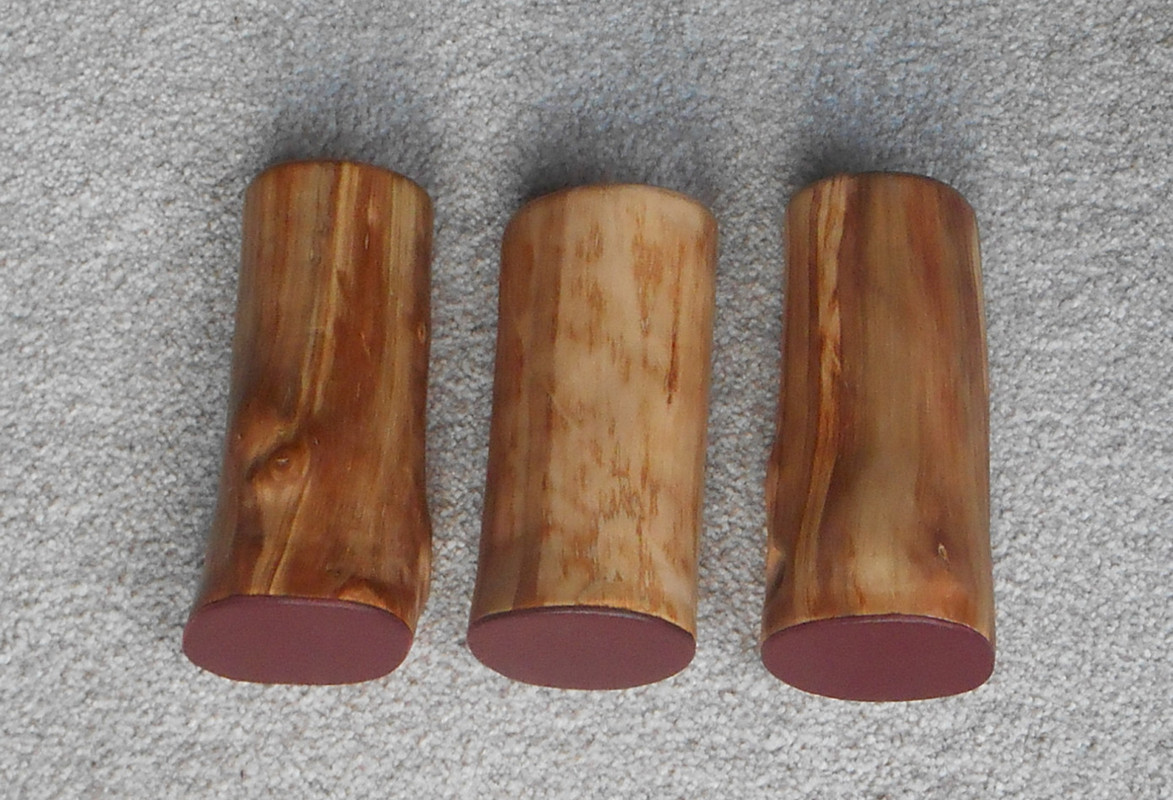@TommyDee
Looking back into the history of Log vape development, the general consensus seems to be, that less is often more

One key point in vape development is the question, how much herb you wanna be able to roast in a bowl/session. Answering that question will determine, how wide your air path needs to be and in turn, what kind of heater you will need to roast your herb most efficiently.
For the classic Log vape, we're usually talking a load size a bit smaller, than a Vapcap full (maybe ~ .05 to ~0.1g?) and a bowl ID between 7mm and 10mm, which means you need an air path of about the same inner diameter and an heat output s/where between ~ 5w and 8w for cooking it properly.
You wanna cook larger loads, like e.g. the 12mm basket screens, the Splinter uses, you gonna need a wider air path and a fatter heater with more wattage.
With an appropriately powered heater then, thermal mass is usually quite overrated and often acts more like a heatsink, than a thermal battery.
First generation Logs like the old Purple Days or Aroma Zaps used a massive ss or brass heat exchanger, that filled up the whole heater well (some pics below) and weighed 150g to 200g alone! With the weight of the wood added, you could get units, that weighed nearly half a kilo

The original idea was to have the 5w/20ohm resistor, that served for a heater in those units, in direct contact to the brass/steel of the massive core and then heating up all that metal, till it would radiate enough heat to cook your herb.
Result was, that those early Log vapes took nearly a whole hour for heat up, till the massive core was heat saturated enough to produce some clouds, which o/c was offset by the fact, that these old work horses were meant to be running 24/7 the whole year round anyway. So having to wait an hour for heat up was s/thing that didn't occur very often usually

However, a heat up time of an hour is a crass thing and there were other detriments, like the massive core charring the wood over time, so that the core would become loose or the wood started cracking, when it shrank against the core due to the heat. That required the adding of ceramic insulation around the core then, which made the whole affair even more complicated.
Some next generation Log makers, like
@Alan for instance, gradually began to strip away the layers of that massive core for their own Logs over time, as it became clear, that the central heating tube alone, only insulated by an air cushion from the surrounding wood of the heater well, provided already enough thermal mass, to sustain the needed heat output, while at the same time evading the charring and shrinking problem. You just had to find a way to minimize conduction heat loss to the body, so that the heat would remain mostly concentrated within the confines of the heater cover and be then transferred to your load. Creating a 'heat island', so to speak. So the massive washer battery had to go first, then the outer tube and in the extreme, all that's left is the short center tube of the original core plus a washer for its base, like you see in the HI, the WS and my Misty. The Nano still keeps the outer tube and Dave's UD still uses a closed core design, though with a much more streamlined, lightweight and more efficient internal design. The HI Log's ss core weighs about 6g now! Even the two ss screws holding it in the wood weigh more already

It's really more a heater cover now, than an actual 'core'.
Result was the modern Log, that has a vastly improved heat up time of 5 to 10 minutes now, can be run in 24/7mode, doesn't have charring problems, weighs only a few grams, making it ideal for use with bong and can produce massive clouds from just a pinch of herb and with a heater, that ranges between 5w to 10w at the most, making it almost invisible on your electricity bill, even if you run the little bugger 24/7the whole year round

From this perspective, employing a more powerful heater just to hurry up the already short heat up time seems rather redundant, especially with the newer cartridge and halogen heaters, that were already selected with a large enough 'reserve' in mind, to facilitate fast heat up and rapid temp adjustment.
I usually run the 7,5w cartridge at a max of about 11v/6w, and that is already short of combustion. Still another volt and another 1,5w to go from there. And if that still isn’t enough… go and get yourself a 14v PS. That cartridge can put out a whopping 36w, if you feed it 24 volts

The 10w bulb I also run at ~11v/8w, with another volt and another 2 watts in reserve.
Impressions from the ancients: Purple Days and AromaZap core design

Modern heater covers: Left: Woodscents. Top right: Misty. Bottom right: HI/Heat Island

Anyway… if instant heat up is so important for you in a desktop unit, maybe take a closer look at Alan's
i(nsta)Heathybrid, which combines a 510 portable solution (spiral mesh heater) with a base unit, that can be connected to DC power from a PS and also allows for temp control
 http://fuckcombustion.com/threads/insta-heat-aka-iheat.24839/
http://fuckcombustion.com/threads/insta-heat-aka-iheat.24839/

PS: As Vapcaps already abound in the vaping community, they naturally make for perfect Log vape stems and spare you the trouble of having to design all stems and tips from scratch yourself. Just look at the Woodscents.
Also: there is a portable 510 Vapcap heater here, just a few pages back. Uses an OTS workforce mesh heater RDA (Wotofo Profile RDA, with 0.18ohm mesh style coils) and is super easy to build. Just set your box mod to 30w and make big clouds! Don't even bother with all the mind numbing and boring TC stuff, as its kanthal mesh and so TC won't work.















 and they do indeed work fine
and they do indeed work fine 












 ...<= meet Jhonzin'
...<= meet Jhonzin'








 Yea, that's where we're going
Yea, that's where we're going 
